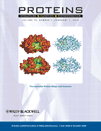RigidFinder: A fast and sensitive method to detect rigid blocks in large macromolecular complexes
Abstract
Advances in structure determination have made possible the analysis of large macromolecular complexes (some with nearly 10,000 residues, such as GroEL). The large-scale conformational changes associated with these complexes require new approaches. Historically, a crucial component of motion analysis has been the identification of moving rigid blocks from the comparison of different conformations. However, existing tools do not allow consistent block identification in very large structures. Here, we describe a novel method, RigidFinder, for such identification of rigid blocks from different conformations—across many scales, from large complexes to small loops. RigidFinder defines rigidity in terms of blocks, where inter-residue distances are conserved across conformations. Distance conservation, unlike the averaged values (e.g., RMSD) used by many other methods, allows for sensitive identification of motions. A further distinguishing feature of our method, is that, it is capable of finding blocks made from nonconsecutive fragments of multiple polypeptide chains. In our implementation, we utilize an efficient quasi-dynamic programming search algorithm that allows for real-time application to very large structures. RigidFinder can be used at a dedicated web server (http://rigidfinder.molmovdb.org). The server also provides links to examples at various scales such as loop closure, domain motions, partial refolding, and subunit shifts. Moreover, here we describe the detailed application of RigidFinder to four large structures: Pyruvate Phosphate Dikinase, T7 RNA polymerase, RNA polymerase II, and GroEL. The results of the method are in excellent agreement with the expert-described rigid blocks. Proteins 2010. © 2009 Wiley-Liss, Inc.




